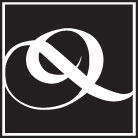
Today is the end of week of travel, visiting and work.
I got some good direction on a calendar publication I am doing for the Museum of Glass. We have been working with the inspiration of the calendar being the front section of the New Yorker, the same from New York Magazine and a children's magazine...I think Time Out. So the theme is packed copy...tight tight, everything columnar and gridded--limited silhouettes and run-arounds. I found a cool font, Conduit, that is a workhorse in this pub as its a bit condensed and fresh (not overused), so with a bit of negative spacing, and slightly tighter leading, I am able to make the graphs relatively black looking. The real trick here is that the client needs multiple layers of headlines (about 4 treatments) ---that tier...and after yesterday, I think we are there. The other nice thing about this pub is that it is 6" x 12" ( a one by two unit page--which becomes a square or a one by one unit in the spreads). So the size is cool too. I hope to get this sharpened up today.
We also have a bunch of other publications in the mix that need to be resolved. Additionally, I need to comb through an identity manual for use in India. Erich and I reviewed a manual out of Sweden yesterday and was scratching our heads as the color aspect of the manual was a bit more than we usually provide or even read...showing cmyk, rgb, pantone color--all the known world. However, this team insists that designers work with LAB colors, which essentially is a photoshop color-space that is just that--a color-space--that in order to output(read print or display) needs to be translated to cmyk or rgb. It does provide a consistent way to deal with files--Wiki talks about the advantages of Lab:
Advantages of Lab
Unlike the RGB and CMYK color models, Lab color is designed to approximate human vision. It aspires to perceptual uniformity, and its L component closely matches human perception of lightness. It can thus be used to make accurate color balance corrections by modifying output curves in the a and b components, or to adjust the lightness contrast using the L component. In RGB or CMYK spaces, which model the output of physical devices rather than human visual perception, these transformations can only be done with the help of appropriate blend modes in the editing application.
Because Lab space is much larger than the gamut of computer displays, printers, or even human vision, a bitmap image represented as Lab requires more data per pixel to obtain the same precision as an RGB or CMYK bitmap. In the 1990s, when computer hardware and software was mostly limited to storing and manipulating 8 bit/channel bitmaps, converting an RGB image to Lab and back was a lossy operation. With 16 bit/channel support now common, this is no longer such a problem.
Additionally, many of the “colors” within Lab space fall outside the gamut of human vision, and are therefore purely imaginary; these “colors” cannot be reproduced in the physical world. Though color management software, such as that built in to image editing applications, will pick the closest in-gamut approximation, changing lightness, colorfulness, and sometimes hue in the process, author Dan Margulis claims that this access to imaginary colors is useful going between several steps in the manipulation of a picture
Hewlett Packard describes Lab color this way:
Lab Color Space Model
Lab is a theoretical color model that describes color in three planes: L, a, and b. This color model is not tied to any display/output device, as is the case with RGB and CMYK. This color model is consequently considered a 'device-independent' color model, and does not carry with it the inherent gamut limitations of monitors or printers. The three planes of Lab describe the following:
L = describes how light a color is (range = 0 to 100; higher numbers are lighter)
a = describes how red/green a color is (range = -128 to 127; + values are more red; - values are more green)
b = describes how yellow/blue a color is (range = -128 to 127; + values are more yellow; - values are more blue)
I love it --color you cannot see...the land of the it's there, believe me... the land of the imagination. Maybe the secret sauce?As you can see...this is a party that we need to better understand. It could be a nice tool to understand to establish a more consistent approach to our work and files depending of course on the end use(s) which often gets parsed to a wider range of uses that no one anticipates.
I need to finish up the first of my pics for Hartford. First one is a Buffalo head surrounded by yellow roses and a lone-star. Next is an image (or two) around the Cow-town designation that Fort Worth happily claims. And then, I need to jump into a chicken illustration and one of a very cute dog that I just met!
We are up at Sheldrake for sleeping and living after work for the next few days. The little day lilies are bright green promises, the forsythia is in bud but no bursting branches. Its going to be cut those bushes down to nubbins after they bloom as they are enormous and we will have to strain to see the water if we don't do some massive chopping. No daffodils yet though the snowdrops have come and gone. Tiny tips of our fragrant hostas are pushing up--but just. It is such a privilege to see the sky colored water stretching out in front of us with the world waiting to burst with leaves and colors. And we are not talking LAB color. The real thing, please.
